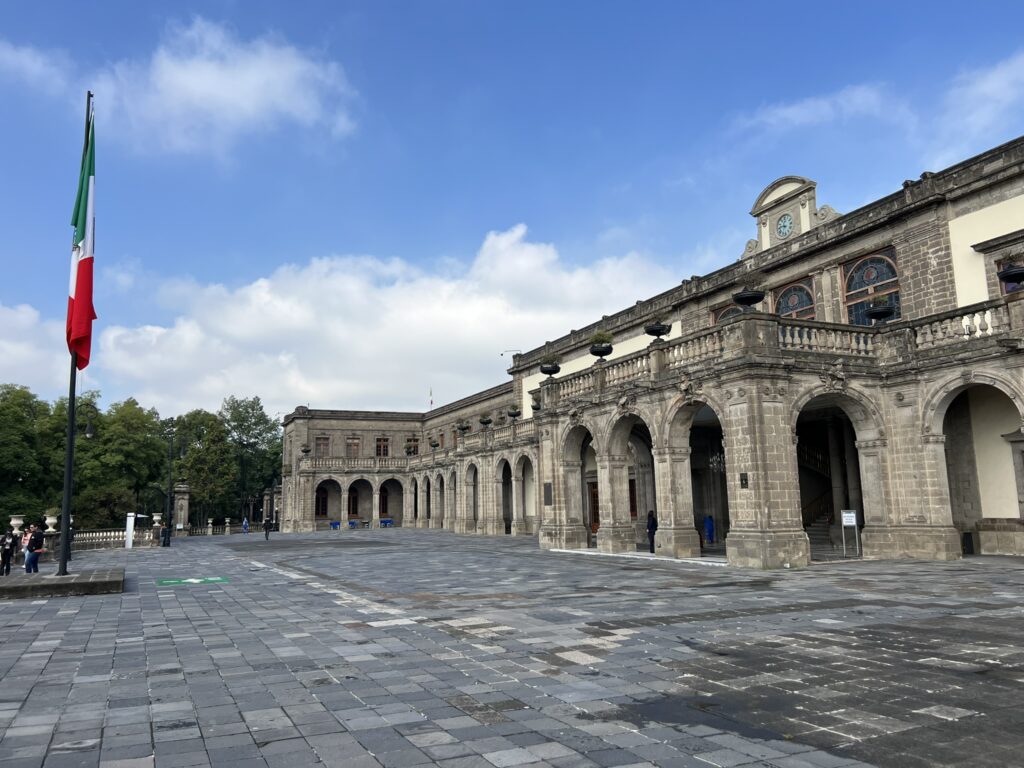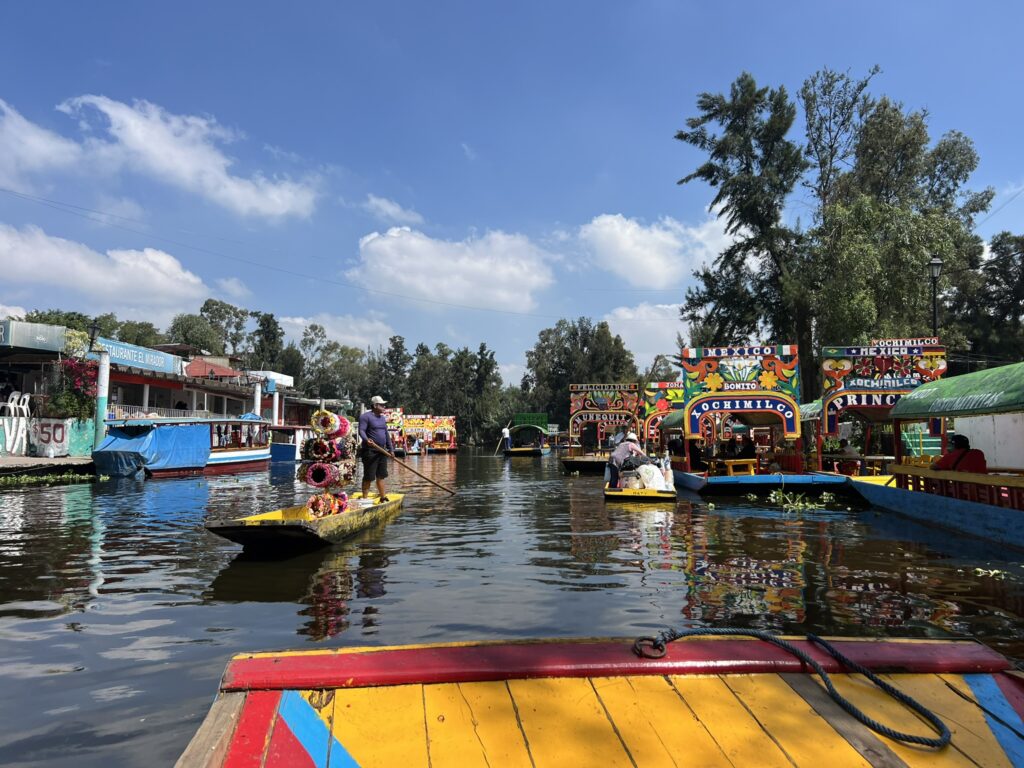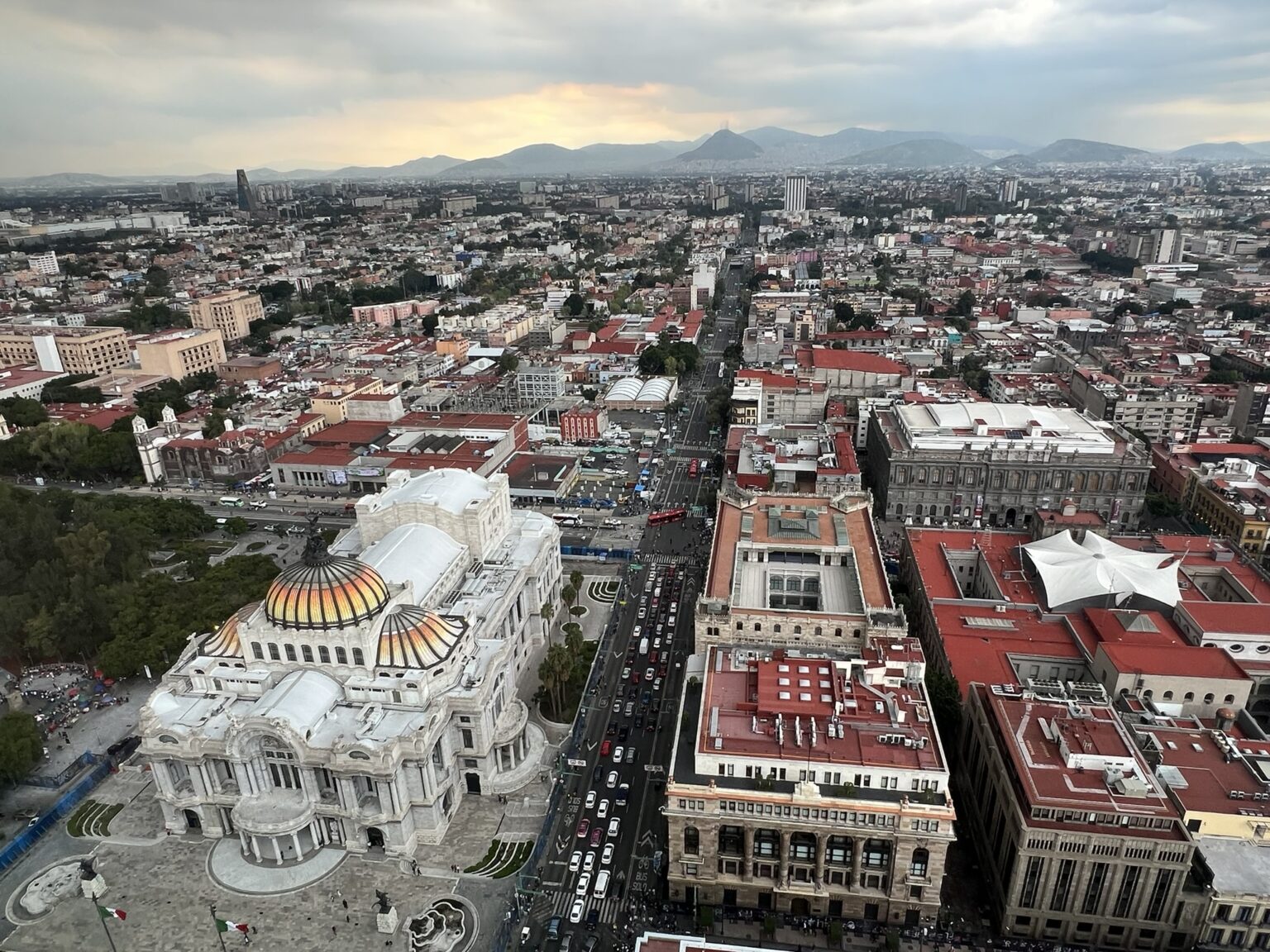Ciudad de México (CDMX) is the biggest city in North America and the capital of México. We explored various neighborhoods, tried delicious tacos, and learned about the city’s history during our visit.
Best Thing I Ate This Week
Mole Madre 3519 Días at Pujol in Ciudad de Mexico
Pujol was opened by Chef Enrique Olvera in 2000 and characterizes its food as constantly transforming. The restaurant focuses on high quality ingredients and diverse techniques in its approach to Mexican cuisine. The key elements of the Mexican cooking they employ are corn, seafood, and vegetables. Chef’s Table Season 2 profiled Enrique Olvera’s story and how he was inspired to take a new approach to Mexican fine dining. Today, Pujol is routinely recognized as a top restaurant in Mexico and, according to World’s Best Restaurants 2023, is ranked 13 in the world. To celebrate the end of our travels in Latin America, we were lucky enough to get a reservation for our last week in Ciudad de México from someone canceling a few weeks prior to the date.

Upon arriving at Pujol, it was slightly raining and the rideshare was instructed by the door team to pull into a covered driveway. When we stepped out of the car, they warmly welcomed us and covered us with umbrellas as we walked to the restaurant entrance. It was such a positive start to the experience already, and once we entered the restaurant, we were so impressed with the interior design. The dining room and bar were completely stunning but welcoming at the same time. All of the food and drinks that we tried during our meal were delicious but the one that stood out above the rest was the mole madre 3519 dias.


Mole is a traditional Mexican dish that is claimed to have been created in Oaxaca and Puebla but exactly where is not known with certainty. When chef Enrique Olvera was taking trips to Oaxaca he was inspired by their famous mole dishes and how the various indigenous groups in the region had their own special preparations to make moles unique to them. He took this approach back to his team and decided that his mole would continue to evolve so it is always unique. Each day the mole from the prior day is re-leveraged with new ingredients for the mole for that day, meaning that it is never exactly the same. When we visited Pujol the mole was on day 3519 since its initial inception and the flavors were indescribable. Although it looked simple on a plate with only a taco and two different circles of mole, the flavors were so complex and filling. It was a dish unlike any I had before and made for a memorable way to celebrate the end to an incredible journey.
An Interesting Fact I Learned
Maximilian I was an Austrian Archduke that became emperor of Mexico in 1864
Located near the center of Ciudad de México is a beautiful green park called Bosque de Chapultepec. At the top of the hill in this park is Castillo de Chapultepec (Chapultepec Castle), which has stunning views of the surrounding area and today is a wonderful place to visit to learn more about the interesting history of its former residents. The castle itself was ordered to be constructed in 1785 by the Viceroyalty of Spain on top of a hill that had sacred significance to the indigenous population. For some time the building was without occupation and eventually the city purchased it for a military academy in the 1800s.

In the 1850s, Mexico was in the middle of a conflict between conservative and liberal fractions of the country. It was initially a domestic war, but after a loss, the conservatives looked to foreign help from the French power led by Napoleon III. Eventually in 1861, the liberal Mexican government led by President Benito Juarez suspended payments on foreign debt, which gave justification to French and Mexican conservatives to establish the Second Mexican Empire. Napoleon III pledged the strength of the French army and installed the Archduke Maximillian of Austria as Maximillian I of Mexico. In 1864, Maximillian moved into the castle and hired architects to renovate it in a neoclassical style, which converted it to an extravagant residence suitable for a royal couple. He also ordered the construction of a grand avenue to be built up to the castle so that the city would rival those that existed in Europe, and he named the avenue after his wife.

Throughout this time period, the United States backed the liberal President Benito Juarez but was unable to send support due to its own Civil War. However, once the American Civil War ended in 1865, the U.S. turned its attention to Mexico. This led Napoleon III to withdraw the French army that was backing Maximilian I and his monarchy ended up collapsing. Eventually Maximillian I was captured, tried, and then executed. This put an end to monarchy as a major influence in Mexico, but the castle remains a top tourist attraction and informative museum. The road that Maximilian built is no longer named after his wife and is known as Paseo de la Reforma. It is regarded as one of the world’s most impressive streets to walk along.

My Travel Tip of the Week
Eat at the street vendors in Ciudad de México
Over the years, I heard from many people that the best tacos can be found in Ciudad de México (CDMX) and was excited for my visit to try them myself. I read many different publications in English and Spanish to try to identify which places I should visit. Everyone seemed to have their own opinion about which restaurants were the best but one list that inspired me the most was Rick Bayless and the Topolobampo team. They visited 13 taquerias in 12 hours during a research trip to try specialty dishes while in the taco capital of the world. I did not want to visit exactly the same places on their list, and instead chose a similar number of taquerias over a much longer time period to determine what was my favorite. It was a fun and delicious experience trying so many tacos, many of which I had never had before, that you can read more about here.

At the end of my time, I had visited numerous taquerias across different dining levels, from casual to full service and all the way up to a Michelin Star awarded taqueria. On my last day in CDMX, I had a few pesos left and had been wanting to try tacos from one of the numerous street vendors that were right outside my accommodations and had kept passing during my visit. I remembered the advice from someone we met from CDMX: follow the Mexican crowds and you will never be disappointed with the street vendors that you pick. For our last lunch, we passed by a few street vendors but one in particular had a substantially larger crowd than the others. The chef was grilling the meat on a flat top grill in front of everyone and had bowls of freshly made toppings around a table. We ordered a few tacos and joined the local lunch crowd. More people continued to come throughout our meal, and after our first bites, we instantly knew why. The meat, along with all of the homemade toppings, were so flavorful and delicious. It made me realize that I should have been eating at more of the street vendors throughout my stay in CDMX. The next time I visit I will be sure to prioritize street vendors to hopefully have more amazing meals like my last one at El Parrillon de Peter.


My Additional Anecdote This Week
Ciudad de México has many great neighborhoods to explore
Ciudad de México (CDMX) is believed to have over 9 million people living in the city, making it the largest in all of North America. The city itself is divided into 16 alcaldías (mayorships), which according to CDMX’s website consist of 1812 colonias (small neighborhoods). Visitors tend to prioritize spending time in some of the most popular tourist neighborhoods such as Polanco, Roma Norte, La Condensa, and Juarez. These are great places but only provide one perspective on life in CDMX. Thankfully, the city offers a robust public transit system, which makes it easy to visit other parts of CDMX and also helps you avoid the notoriously bad car traffic. During our visit, we branched out from the most touristy parts of CDMX to visit attractions and taquerias a little further out. While we only scratched the surface of getting to know CDMX, our positive experiences left us wanting to go even deeper in the neighborhoods on our return. Below are a few experiences by neighborhood that show the great depth of CDMX.


Xochimilco
trajinera (colorful boat) rides on Mexico City’s remaining canals
San Juan Teotihuacan
Templo de Quetzalcoatl, Piramida de Sol, Piramida de Luna
Bosque de Chapultepec
Museo Nacional de Antropología, Castillo de Chapultepec
Gustavo A. Madero
Basílica de Santa Maria de Guadalupe
Doctores
Arena Mexico for Lucha Libre
Roma Sur
El Hidalguense, Taqueria Los Parados
San Rafael
Taqueria El Califa de Leon
Narvarte Oriente
El Vilsito, Tacos Tony
Coyoacan
Universidad Nacional Autonoma de Mexico, Museo Frido Kahlo
Mercado Coyoacan
Centro
Zocalo/Tenochtitlan, Palacio de Bellas Artes, Plaza Manuel Tolsa
Churreria El Moro



